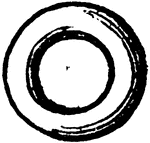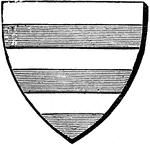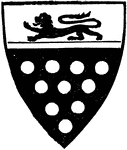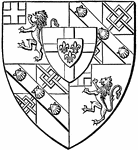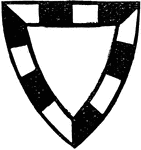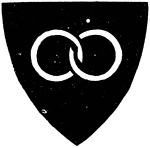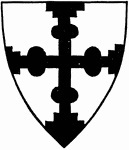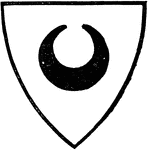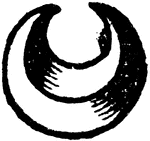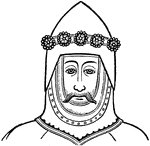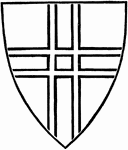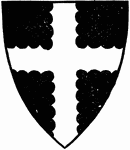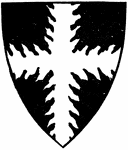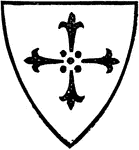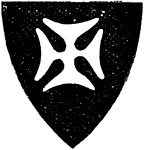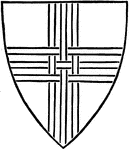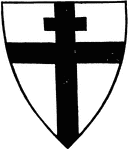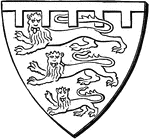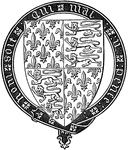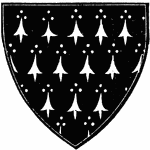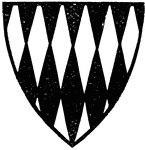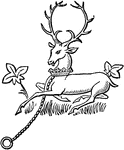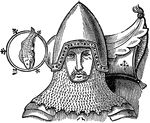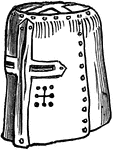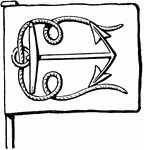
Anchor
"This charge is borne with a cable, and set fesse-wise, by the British Admiralty; but it is usual to…

Argent Shield
A heraldic shield made of argent (silver), which is represented by its plain, smooth surface.
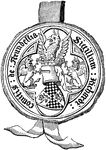
Seal of Richard, Earl of Arundel
"The Seal of Richard, Earl of Arundel, bears his achievement of arms. The supporters, crest, helm, etc.,…
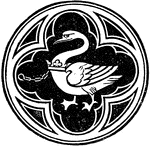
De Bohun Badge
"De Bohun badge. From the central spandrel of the Canopy of the Brass to Alianore de Bohun, Duchess…
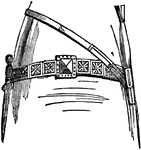
Baldrick
"A band or sash worn partly as a military and partly as a heraldic symbol. It passes round the waist…

Helm of Baronet
"The Helm of Baronet and Knights is of steel, garnished with silver, and standing affronté; the…
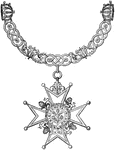
Insignia of the Order of the Bath
"The collar, of gold, in weight thirty ounces, is composed of nine imperial crowns, and eight groups…
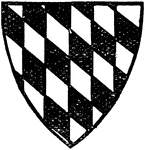
Paly Bendy
"Produced by lines drawn vertically, by others drawn diagonally, or by a compound of Paly and Bendy."—Aveling,…
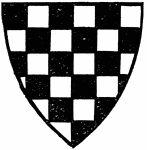
Chequée
"Chequée is when the field is divided by lines perpendicular and horizontal, crossing each other,…
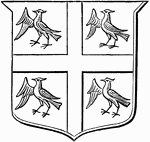
Arms of the Heralds' College
The coat of arms for the office that regulates heraldry and granting new armorial bearings.

Counter-Componée
"Counter-componée has two rows of squares, with a metal and color alternating."—Aveling,…
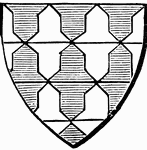
Counter-Vair Shield
"Counter-vair is when the arrangement of the little shields or bells is varied so that those of the…
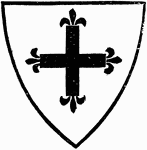
Cross Fleur-De-Lis
A heraldic shield with a charge cross in which the extremities terminate with fleurs-de-lis.
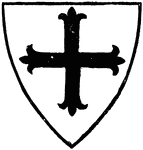
Cross Fleury
"A Cross Fleury, or Fleurie, is borne in the arms of Lord Brougham and Vaux. It is not very unlike the…

Cross Quarterly
"Cross Quarterly is a Cross cut by a partition line, and the tinctures reversed or counter-changed."—Aveling,…

Cross Recercelée
"The Cross Recercelée is very similar to the Cross Moline, but the extremities are curled backwards."—Aveling,…
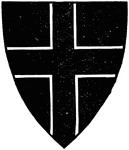
Cross Voided
"A Cross voided is not unlike the Cross double parted, but the bars do not run through or across the…
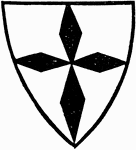
Four Fusils in Cross
"It will be observed that the charge upon the shield in this instance is not the Cross, but the lozenges."—Aveling,…

Frimbriated Cross
"The Fimbriated Cross is a cross having a border of another tincture, generally for the purpose of allowing…

Eastern Crown
"The Eastern Crown, called also the Radiated and the Antique crown, is borne both as a crest and as…

Mural Crown
"The mural crown is a circle of fold embattled, and it is associated with military success in sieges."—Aveling,…

Naval Crown
"The naval crown is a golden circle surmounted with sterns and square sails of ships, placed alternately."—Aveling,…
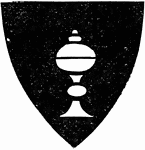
Covered Cup
"An egg-shaped, ornamental, covered cup, with a circular pedestal and base."—Aveling, 1891

Eagle
The heraldic charge of the eagle is one of the earliest charges. It holds the same rank that the lion…
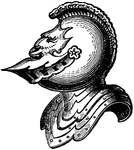
Helm of Esquire
"The Helm of Esquires and Gentlemen has the vizor closed, and is placed in profile."—Aveling,…
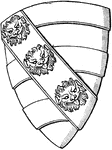
Heraldic Shield with a Lion's Face
The shield of a knight of the time of Edward II. The lion's face is a common charge in heraldry.
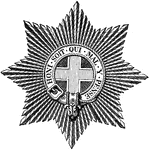
Star of the Order of the Garter
"The Star is the badge, first ordered by Charles I. The rays are of silver or diamonds. The star is…
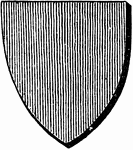
Gules Shield
A heraldic shield with a red (gules) surface, which is represented by the perpendicular lines, drawn…
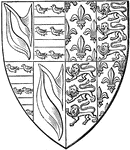
Shield of John de Hastings
"Shield of John de Hastings, K.G., Earl of Pembroke, Quatering De Hastings and De Valence, and impaling…

